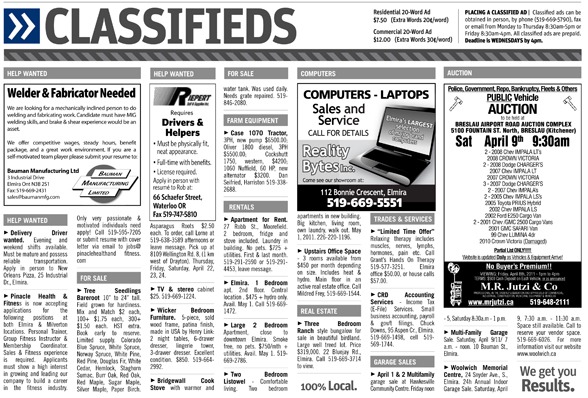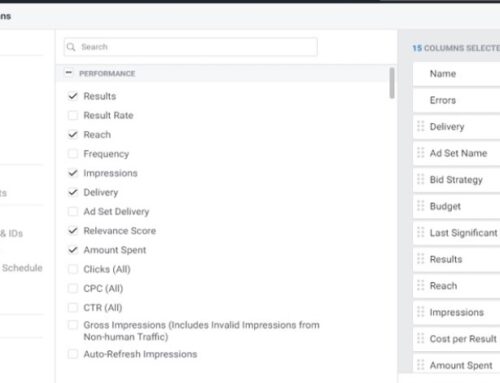How to write high-performing Google Ads?
What is the style of Google ads, or PPC ads? After years of study, I would advise the reader to write in a telegraphic way. That is the way that works, principles of writing PPC ads should follow closely to the old, classified newspaper ads. PPC ads belong in a class of “small ads”.
In the old days, it would be no different from classified ads. Both are intent-focused and advertisers are given limited space. In the newspaper, it may be 2×2 inches. In Google ads, it is 3 x 30 characters (sometimes the 3rd headline doesn’t even show.)

PPC ads resembles the classified ads you find on newspaper
Because of their ‘smallish’ nature, PPC ads cost almost nothing to run compared to some of the other networks. You don’t have to phone a television network to cut a deal, which was mainly reserved for big-budget companies. A few hundred dollars and you can show on top of the front page when customers are looking for you. And immediately you find out its cost and return.
You test different selling points to find out the best return. As you progressively eliminate and test, your ads become more efficient and profitable. If you are in the consumer goods sector or any business with high repeat purchases. (eg. shaving blades or detergent) You may find it even more profitable. Your business gets to acquire a customer at a tiny cost of what it could be (running a full-page newspaper ad or 15 second TV ad) and you potentially get a long staying consumer. It is simply high CLV.
Advertising is selling expectations
Back to writing Google Ads, I like to point out that in advertising, we are mainly selling expectations. Compare it to an author selling books. So much of its weight lies on the book cover and any author will agree on this. You can expose the best method to lose 20 pounds in 5 days, or a new revolutionary way for humans to travel to Mars and return safely. If it’s put behind a lackluster cover, nobody will ever know of it.
This is why book publishers relaunch their books with different titles. Even though the book essentially stayed the same, a different title caused it to sell 500-1000% more than its original version. Why is that so? The book is essentially the same. The content stayed the same. Not one word in the book is omitted or replaced.
Because we all judge a book by its cover. In advertising, customers judge your ads by the headlines.
How important is the headline?
Every advertising is judged on the headlines. I cannot stress this point any further. In the past, advertising companies only allowed senior or top copywriters in their company to write the headlines. While junior copywriters can only write and edit the body copy. There is a reason for this. They believed that the headline holds the most weight in the success and failure of their client’s ads.
They know the importance of headlines in every ad.
A headline may account for 90% of the ad’s success.
If any advertising was to fail, the first thing the adman has to look at is the headline. The writing of small ads is a fine art. I call it the art of condensation. The first thing you need to know is that you are working with limited space.
You have so much to tell the customer, about how great you are, when you started your business, how much your customers love you, how efficient is your product at simplifying their lives. But you can’t say it all. You select the best and give up the rest, or save it in your landing page copy. The headlines are like a spotlight on the stage, it can only shine in one focused area. And the job of the adman decides which part of the business to “shine” on.
Use telegraphic language
You know you can’t write all these things, you can put them on your landing page. You give up everything and condense it in 1 or 2 lines about your proposition. You must write in telegraphic language. Meaning that there is no space for comedy, jokes, cute lines, or sophistry. All these are fatal to any ad’s success. A piece of well-written PPC headline is alike a pot of broth, the more you boil it down, the stronger the flavor gets.
If you have to use 1 paragraph to sum your proposition, see if you can condense it into 1 sentence. If you have to use 1 sentence, see if you can further condense it into 1 phrase. If you have 1 phrase left, see if you can condense it into few words. If you have a few words, see if you can find a word that can give the same meaning.
In short, cut off every fat and leave only the lean muscles in the headline. To ensure that PPC ads pay, give benefits whenever possible. If your business has a free trial, a free class, a discount, limited period sale, free service, say it in the ads. Put it out there. Don’t hide it from the customers. Many customers need “an introduction” to your business before fully committing to it. One foot in the door and the sale is easier from thereon.
If features are important, put in the features as the headlines.
If the price is a key factor, put in the price on the headlines.
If social proof is important, put testimonials on the headlines.
Test the headlines first
How do we know which one is important for your customers? Through testing. As you continue to run and test ads, you know which works and which doesn’t. It helps to keep a list of things that worked and what hasn’t.
In PPC advertising, your prospects are already looking for you. You don’t have to use an attention-grabbing “stopper”. They are already slowing down for you. Now your job is to say in a few words or phrases and get them in your door.
The 2 magic keys to PPC ads are 1) clear and 2) concise. You should have enough words to make your proposition clear, but you cannot waste with any excess words. Every word on the headline is there to help drive the sale. Omit all unnecessary words and adjectives. Use abbreviations if possible. You don’t have to spell out “Singapore” when you can use “SG” as almost everybody in Singapore knows what SG stands for. The phrase “Enquire for free trial” can be condensed into “Free Trial”.
To sum up
- If the best ads are behind every successful campaign, can we say that the headlines of every ad account for 90% of the advertising success?
- Test the headlines and again. Many of the times that’s all you need to test. If you have extra time, you can test the others.
- You can have the most amazing copy, a formula to lose 20 pounds in 5 days, or a new method to help drivers save gas in their cars. Unless paired with a successful headline, it will almost always fail.





